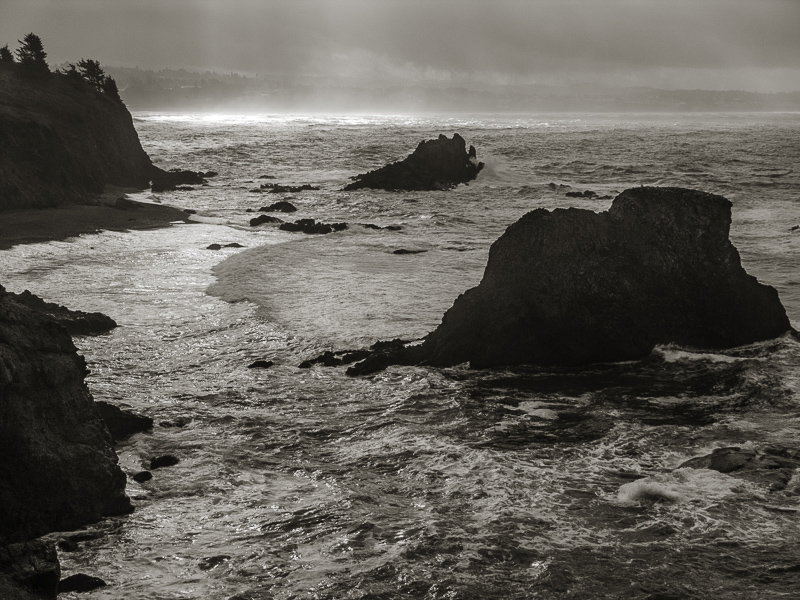Every Picture Is a Compromise
Lessons from the Also-rans
Most photography websites show the photographer's very best work. Wonderful. But that's not the full story of a creative life. If we want to learn, we'd better pay attention to the images that aren't "greatest hits" and see what lessons they have to offer. Every picture is a compromise — the sum of its parts, optical, technical, visual, emotional, and even cosmic – well, maybe not cosmic, but sometimes spiritual. Success on all fronts is rare. It's ok to learn from those that are not our best.
This is a series about my also-rans, some of which I've been able to improve at bit (i.e., "best effort"), none of which I would consider my best. With each there are lessons worth sharing, so I will.
Original digital captureWhat I saw that I liked:I used the above version of this image in my project October Seas. What I don't like in the picture:I like the drama, but the dead blacks in the rocks always bothered me a bit. I tried recovering some detail in a very early version of Lightroom, but it never looked right. I gave up and used the image with the empty blacks. What I learned:For some reason, I decided to see if the newer versions of Lightroom could do a better job. It did! It's easy to forget that we are still in early days of digital processing and the software is getting better and better each year. Maybe it's worthwhile to go back to some of those early images to see what can now be salvaged. This image, for example, was shot with an early 12 megapixel Olympus C8080W in 2012. Software has come a long way in the intervening 11 years. 2nd Chances: What I might try nextI really should work this image in Photoshop with its more powerful masking and curves. |


